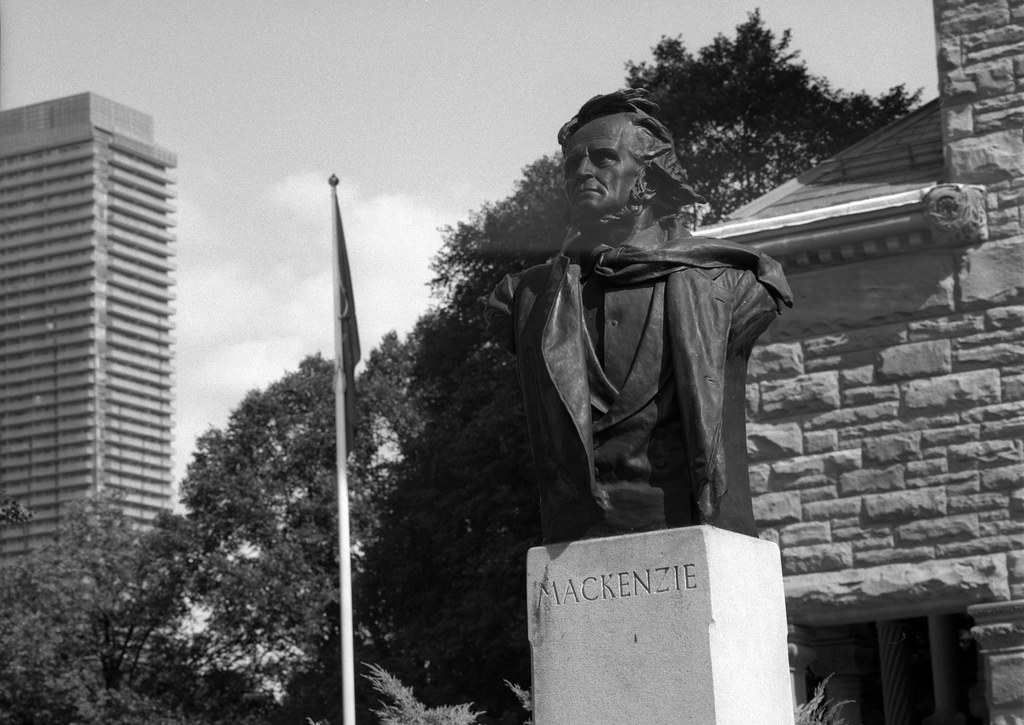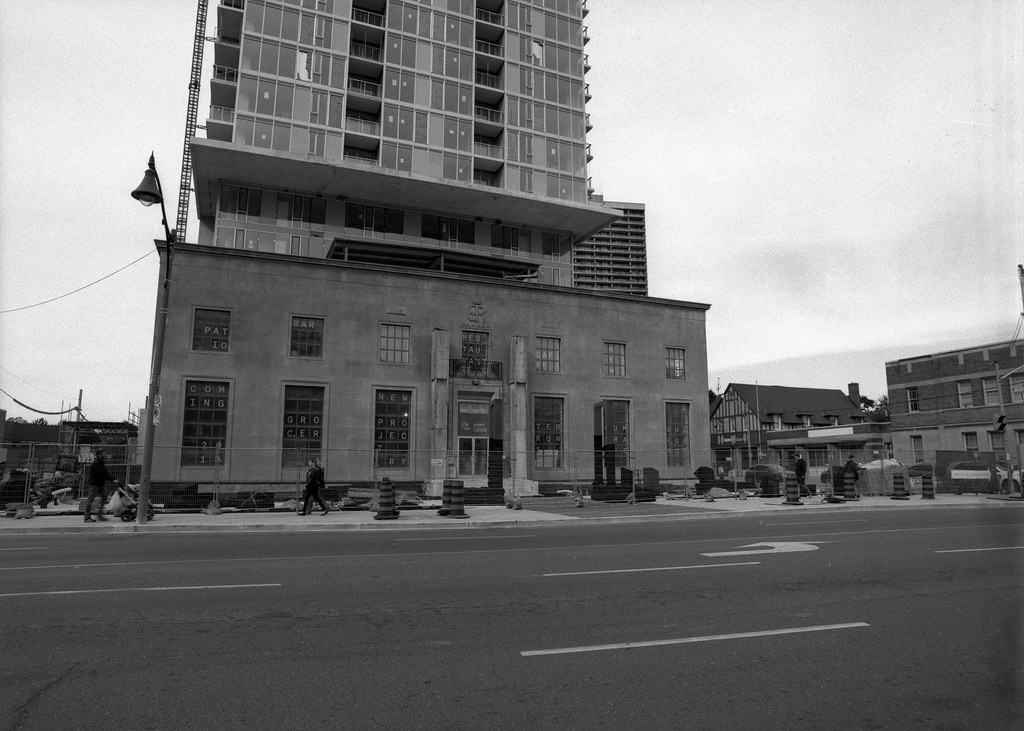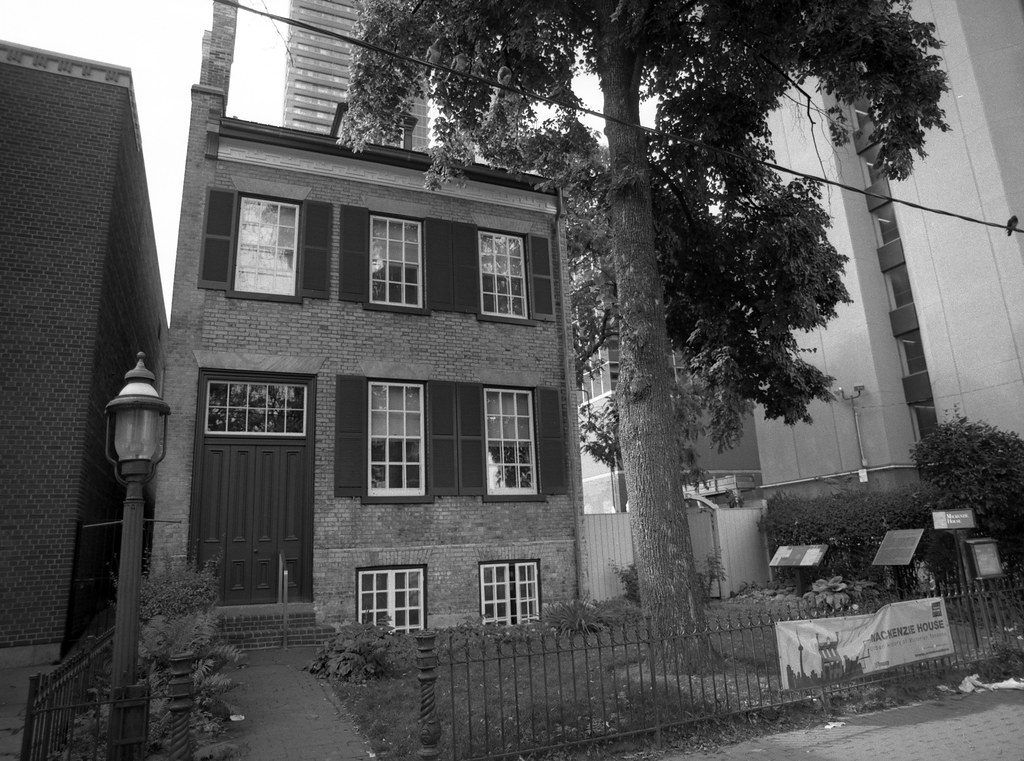William Lyon MacKenzie, not to be confused with William Lyon MacKenzie King (remember that for later), is more myth and legend that man. Cloaked in a persona often of his own making, MacKenzie was at the heart of the Upper Canada Rebellion, his push towards radical reform and public speaking skills caused many to flock to his cause. His use of twisting the facts, overblowing situations and the ability to turn men against each other and himself forced the issue in 1837. But much of what we know of MacKenzie is often more myth than fact, which has like much of Canadian history of the era turned MacKenzie into a hero of folklore than a political force towards change. William’s life began on the 12th of March, 1795 in Dundee Scotland. His father passed away when William was three, and he was mostly raised by his mother. It was from her he formed his view of the separation of church and state that many Scottish Presbyterians believed was the way of things. Even at a young age, he proved difficult to manage and discipline. School proved useful for William, who learned to read, and quickly grew to love the past time, even keeping a journal of the books he had read. From reading, he learned to love writing and began writing for a local newspaper in 1810. He found a father figure in the Lesslie Family, and when William’s mother attempted to apprentice him to a local craftsman, he rebelled, and with the help of the Lesslie’s started his shop and library. His shop would last until 1815, and England’s economy took a downturn after peace returned. He drifted from job-to-job gambled and drank away any savings he had, but by 1820 he realised that he could not stay in England and with the help of the Lessile’s took passage to British North America. He settled first in Lower Canada, working on Canals and writing for the Montreal Gazette. The promise of more work drew William to York (Toronto) where he worked at the Lesslie’s shop and wrote for the Observer, a local paper. In 1822 he mother came to Upper Canada from Scotland, bringing with her one Isabell Baxter, William and Isabell married that same year on the 1st of July. When the Lesslie’s opened a second branch of their store, it would be William who was to manage the shop located in Dundas. The relationship soured a year later in 1823, and MacKenzie broke off the partnership and opened his own business in the village of Queenston. But when his shop failed, William needed a new plan.

Mamiya m645 – Mamiya-Sekor C 150mm 1:3.5 N – Ilford FP4+ @ ASA-125 – Blazinal (1+25) 9:00 @ 20C
While in Queenston he became involved in the reform movement, it’s no surprise much of the reform movement started in Queenston as Robert Gourlay originally settled there back in 1818. But MacKenzie had no plans to join the movement in a political sense, but rather to help out the movement in the coming elections and sway the voter’s favour towards the movement. He would achieve this through the publication of a newspaper. On the 18th of May 1824, the first edition of the Colonial Advocate saw publication. The Colonial Advocate remained a small newspaper compared to other reform publications, but MacKenzie made sure despite its circulation it made a large impact on the voting public. He relocated his newspaper to York that same year to be closer to the action. The move brought him in contact with the leaders of the Reform movement including John Rolph who became a close ally of the Scottish publisher. But the paper never gained enough income to support the continued operation, and in July 1825 William closed up shop and to escape his creditors and debtors prison he escaped to Lewiston, New York. A civil suit against vandals who had ransacked his shop brought him a financial windfall (a sum of ₤625 pounds, today worth ₤59,000) and he was able to pay off his debts and restart operations a year later in 1826. However, the destruction of his printing presses and his run for a seat in the Legislative Assembly changed MacKenzie; he attacked anyone he could using the Colonial Advocate, even publishing a blacklist of men he believed were a part of the Family Compact. He even attacked fellow reformers, often twisting the facts and the truth, his form of yellow-journalism earned William the nickname, William Lying MacKenzie. Despite his tactics, he gained a great deal of support in the Toronto Township, which makes up most of the modern day Mississauga, and won a seat in the assembly in the 1828 elections as did a majority of Reformers. While the speaker’s seat went to fellow reformer Marshall Spring Bidwell, but the Assembly used MacKenzie to investigate everything done by the Family Compact. It was also during this time that MacKenzie returned to the United States and began to learn about how the American government worked, and his views of how the government is Canada should be reformed turned to a more American Republic, rather than a British system. The death of King George IV brought about early elections which saw the reformers lose power, but MacKenzie retained his seat. MacKenzie continued to make his voice heard and found himself expelled and re-elected on many occasions, despite efforts by the Tories and Family Compact to silence him, going as far as physical violence. Fearing for his safety, MacKenzie took his case directly to the Colonial Office. They were surprisingly sympathetic to MacKenzie’s complaints and had several people shuffled out of their positions in Upper Canada and sent a note to Sir John Colborne, then Lieutenant-Governor of Upper Canada to allow MacKenzie to take his seat and put an end to the expulsions. But when he returned from England, his efforts seemed to be in vain as those men who were removed, were simply moved into new posts elsewhere. For MacKenzie, he knew he could no longer trust the Colonial System.

Mamiya m645 – Mamiya-Sekor C 45mm 1:2.8 N – Ilford FP4+ @ ASA-100 – Kodak D-23 (Stock) 6:00 @ 20C
But MacKenzie was not done yet, he needed a place to test some of his ideas, and when York was created into the City of Toronto in 1834 he ran for one of the seats on the city council. Once an alderman, MacKenzie managed to get elected as Mayor. Under the 19th-Century system, Mayors were elected by the alderman on the city council, not by the citizens of the city as there are now (more on that later). He spent his time picking or starting fights between alderman and removing Tory allies and putting his friends into positions of power, a system he derided in the Provincial Government, only because he had no control, but he saw that those elected to power in the United States had the power to put their friends in places of authority. And while the council did manage to pass some bylaws to help with fire prevention and fighting, the major issues such as the city’s debt and sanitation were forgotten. MacKenzie would opt to run for his seat on the Assembly and in the next round of elections for Toronto, he lost his city council seat, although he did return to a reform dominated Assembly. By 1835 MacKenzie was back in action, collecting everything into a grandly named “Seventh Report on Grievances” which were delivered along with several similar reports to the Colonial Office, of which Sir John Beverly Robinson, chief justice and member of the Legislative Council refuted in his response to the report. When Colborne was promoted and moved to the Governorship of Lower Canada, the arrival of Sir Francis Bond-Head sprang new hope in the reform movement, and MacKenzie hoped to gain an appointment to Bond-Head’s Executive Council. But Bond-Head had been told to ignore the Grievance Report and MacKenzie. So when Bond-Head moved to ignore those moderate reformers, MacKenzie would be the first to raise a voice and the entire Assembly had followed. When Bond-Head dissolved the body and called for another round of elections, MacKenzie found himself in the cross-hairs of the Family Compact and their Allies. There was no one else to blame but himself for the loss in that election. His idea of reform had swung wildly away, many of his former allies worked hard to distance themselves from the radical, and he quickly found himself without a seat in the assembly.

Mamiya m645 – Mamiya-Sekor C 35mm 1:3.5 N – Ilford FP4+ @ ASA-125 – Blazinal (1+25) 9:00 @ 20C
The loss of his seat did not end MacKenzie’s attempts at reform, he continued to write when he had to money to publish, but he began to plan a revolution. He had no desire for a bloody armed revolution akin to the American Revolution. His few allies left in the Assembly fought against the Tories, calling out electoral fraud. There were investigations, but nothing came of them. When King William IV died in the summer of 1836, MacKenzie saw his chance because there would be another round of elections, and he fought hard to shed the Traitors brand. The Parliament voted not to dissolve, and Bond-Head did not force the issue. MacKenzie’s anger knew no bounds, he began a new newspaper, publishing the first edition on the 4th of July, 1836 declaring the current government illegal. He took it even further by publishing leaflets with a declaration of independence and a constitution. Both of which modelled after the American documents. MacKenzie’s paper spread lies, misinformation, and could be considered treason. And while many of his inner circle were warry, those who supported him, joining the cause and many would rally to his banner. But here’s where MacKenzie faltered, while an excellent wordsmith and public speaker, MacKenzie was no leader. His actions became erratic, his promised supplies and arms never arrived at Montgomery’s Tavern. And when he had a chance to execute his plan, he faltered and instead ordered the destruction of property. And when faced with the loyalist army, he ran. Even on his flight from Toronto, he caused harm to those who helped him. Specifically, he was indirectly responsible for the death of Sarah Comfort. MacKenzie took poetic licence in the retelling of his escape, and many places claim to have sheltered MacKenzie while on the run, but if you took it all as gospel truth, it would have taken him five weeks, rather than five days to escape to Buffalo. Again in Buffalo he began again but was all talk and little action, despite ‘seizing’ Navy Island, it was always his followers that did the dirty work. And after his escape from Navy Island, he was quickly arrested by the Americans on charges of breaking American neutrality.

Graflex Pacemaker Crown Graphic – Schneider-Kreuznach Symmar-S 1:5.6/210 – Kodak Tri-X 320 @ ASA-320 – Kodak D-76 (Stock) 5:30 @ 20C
MacKenzie would make bail and live out the remainder of the Upper Canada Rebellion in Rochester, New York having little to do outside of commenting on the actions being done by the Rebels and Hunters Lodge. When he did stand trial and found guilty he was sentenced to an 18-month jail term and a $10 fine, approximately $270 in modern currency. Even from prison, MacKenzie continued to rock the boat, while his few remaining allies pushed for President Martin Van Buren to pardon MacKenzie. President Van Buren would pardon MacKenzie, and he was released in May of 1840. His time in jail did little to tame his views, he continued to publish when he can, money troubles plagued him, and he again drifted from job-to-job. He took American citizenship in 1843, despite this he began to speak out against the American government and their lack of action towards annexing Canada. But even the warm embrace of republicanism began to wear on MacKenzie, and he desired a return to Canada, but for that, he needed a pardon. When Responsible Government arrived thanks to Robert Baldwin and Louis LaFontaine in 1849, the new government issued pardons for many former leaders still living in exile. Shortly after receiving word of this he took a trip but would be forced to hide in the home of a friend, as a lynch mob attempted to kill MacKenzie in Toronto. But he still returned in 1850, he took to the writing of his previous life and recounting tales of the Rebellion to any who would listen.

Mamiya m645 – Mamiya-Sekor C 35mm 1:3.5 N – Ilford FP4+ @ ASA-125 – Blazinal (1+25) 9:00 @ 20C
But the call of Politics could not be silenced, and in 1851 MacKenzie won a seat in the Legislative Assembly. Not happy with what the reform movement had gained, he renewed his attacks, and both Baldwin and LaFontaine, already wearied from the fight already resigned. He continued to lash out against an old enemy, Sir Allan Napier MacNab and made new ones in George Brown, despite Brown radical reform views of his Clear Grits. He prevented the Brown from joining the moderate reform movement under Sir Francis Hincks, which in turn formed the Liberal-Conservatives with Hincks and MacNab. He attacked both Hincks and MacNab, eventually forcing both of them to resign their post. Despite the trouble, he did do some good within the province. The election of mayors of cities and towns were taken from the Councillors and given to the voters. He arranged for the final sale of the Clergy Reserves. But by 1858, his health failing he finally retired. Retirement suited MacKenzie as he settled in a comfortable home in Toronto. He mended fences, regaining the friendship of John Rolph and even patched things up with George Brown. MacKenzie suffered an apoplectic seizure of which he would not recover; he would pass away at his Toronto home on the 28th of August 1861. He was buried in the Toronto Necropolis. His wife would pass away in 1873; she is buried next to her husband. MacKenzie’s one daughter, Isabel Grace, would give birth to one of MacKenzie’s greatest namesake, William Lyon MacKenzie King. MacKenzie King would go on to lead Canada as Prime Minister through World War Two and is still today Canada’s longest serving Prime Minister.

Nikon F90 – AF Nikkor 28-105mm 1:3.5-4.5D – Kodak TMax 100 @ ASA-100 – Kodak HC-110 Dil. B 6:00 @ 20C
Today William Lyon MacKenzie is remembered for several reasons, first as Toronto’s first mayor, and secondly for his role in the Upper Canada Rebellion. His home where he retired to in Toronto is located at 82 Bond Street and is a Museum to the life and times of the Rebel Mayor and restored to how it was during MacKenzie’s time in the home. It was declared a National historic site in 1936. The home also features a memorial to the Rebellion that was once located in the Niagara Region and was moved to the Museum in the 1970s. His original home and printing office were restored in the 1990s from ruin and today operates as the MacKenzie House and Printery Museum which features the oldest operating printing press in the Country. However, MacKenzie continues to be remembered the most in Toronto, with William Lyon MacKenzie Collegiate Institue and the fireboat Wm. Lyon MacKenzie both taking their name from the firebrand. MacKenzie remains one of the more misunderstood historical figures, a man driven by the ideas and the ideals of those who he saw as worthy. He often over-reacted and used fear and his sense of right and wrong to make decisions. And he is still more myth than man, and I’m glad he failed.
2 Comments